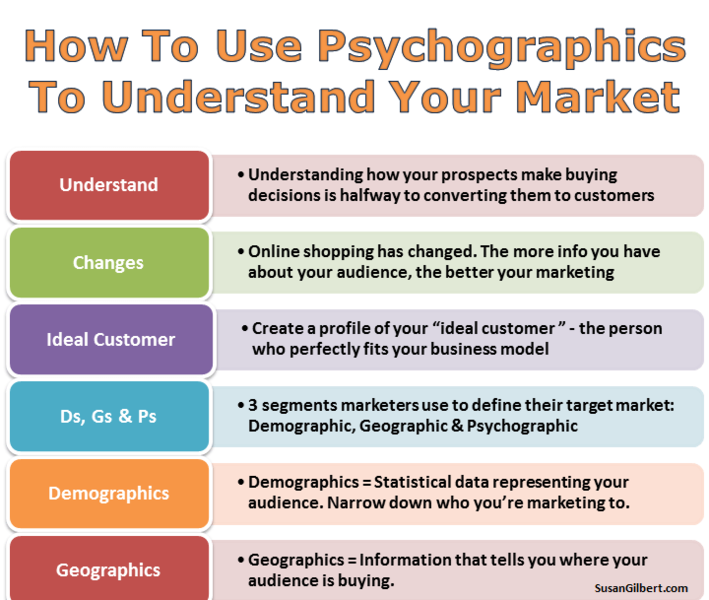4.7 Audience Segments: Psychographics

Psychographics refer to all of the psychological variables that combine to form a person’s inner self. Even if two people share the same demographic or geographic characteristics, they may still hold entirely different ideas and values that define them personally and socially. Some of these differences are explained by looking at the psychographic characteristics that define them. Psychographic variables include:
Motives – an internal force that stimulates someone to behave in a particular manner. A person has media consumption motives and buying motives. A motive for watching television may be to escape; a motive for choosing to watch a situation comedy rather than a police drama may be the audience member’s need to laugh rather than feel suspense and anxiety.
Attitudes – a learned predisposition, a feeling held toward an object, person or idea that leads to a particular behavior. Attitudes are enduring; they are positive or negative, affecting likes and dislikes. A strong positive attitude can make someone very loyal to a brand (one person is committed to the Mazda brand so she will only consider Mazda models when it is time to buy a new car). A strong negative attitude can turn an audience member away from a message or product (someone disagrees with the political slant of Fox News and decides to watch MSNBC instead).
Personalities – a collection of traits that make a person distinctive. Personalities influence how people look at the world, how they perceive and interpret what is happening around them, how they respond intellectually and emotionally, how they form opinions and attitudes.
Lifestyles – these factors form the mainstay of psychographic research. Lifestyle research studies the way people allocate time, energy and money. One of the most well-known lifestyle models is the Values and Lifestyles System (VALS™) devised by research firm Strategic Business Insights. The model  categorizes people according to their psychological characteristics and their resources. Advertisers use it to determine what kind of products and advertising appeals will best work with an anonymous audience member who falls into one of the eight categories, or mindsets, in the VALS™ model.
categorizes people according to their psychological characteristics and their resources. Advertisers use it to determine what kind of products and advertising appeals will best work with an anonymous audience member who falls into one of the eight categories, or mindsets, in the VALS™ model.
For example, someone who falls into the “Striver” category is said to be seeking self-definition, motivation and approval, and is low on economic, social and psychological resources. The “Innovator” group is comprised of successful people with high self-esteem and high income, with a wide range of interests and a taste for finer things.
These categories are most useful for advertisers in helping determine a “unique selling proposition” that would be most appealing to one type of person or another, but they also help other message creators understand WHY advertisers support the types of media they do and why some types of messages are created while others are not.

